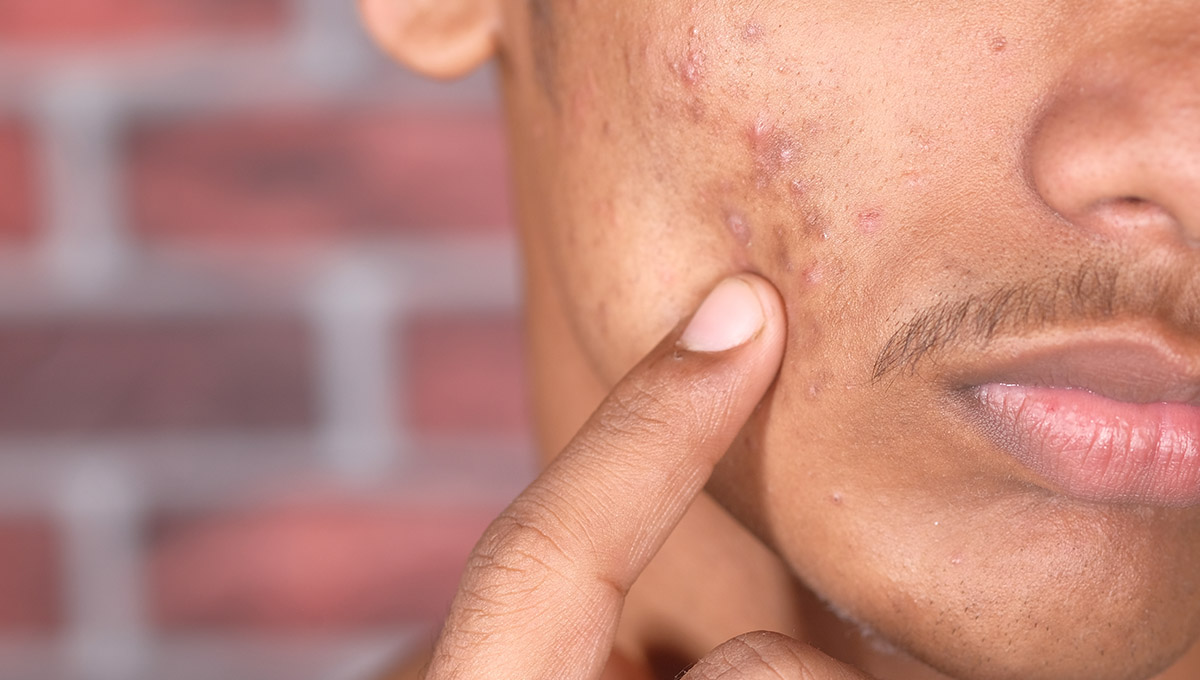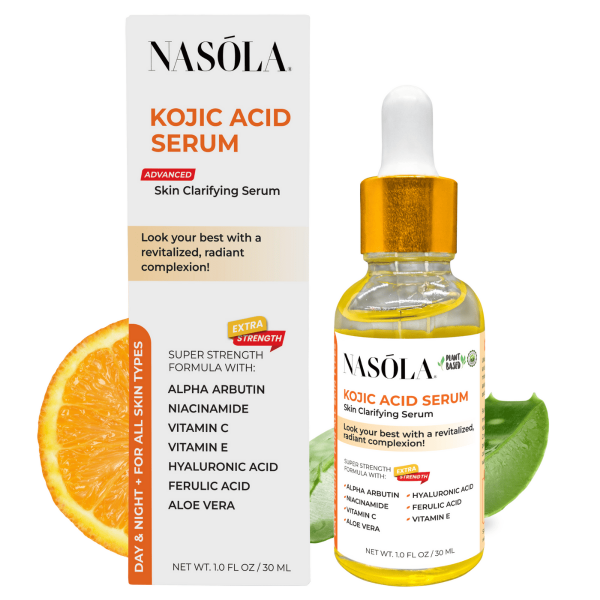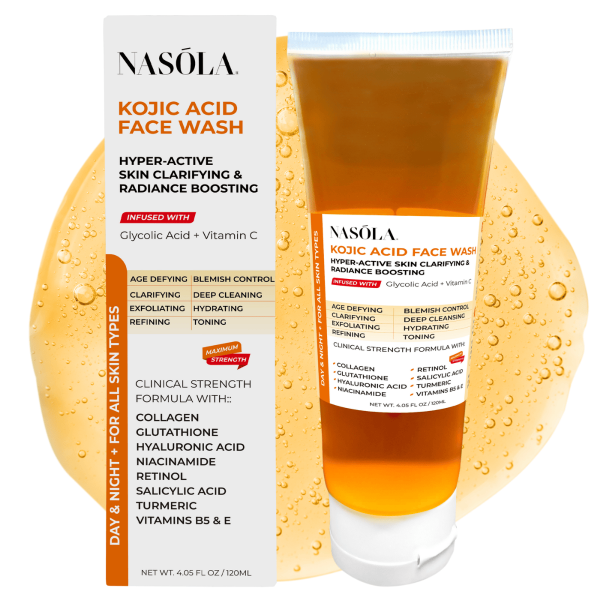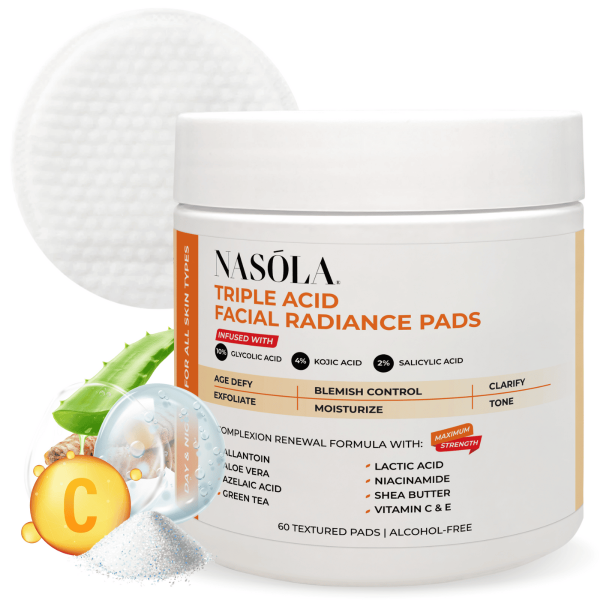Have you ever looked in the mirror, squinted just a bit, and wondered—“Are these acne scars or just spots?” You’re definitely not alone. Acne scars vs hyperpigmentation confuses the best of us. You think the breakout’s done and dusted… and yet, something lingers.
Let me tell you from experience—treating the wrong issue with the wrong product? Wastes time, energy, and money. But knowing the real difference between acne scars and hyperpigmentation? LIFE-CHANGING. Because once you know which beast you’re fighting, you’ve got control.
In this blog, we’ll break it all down, clear things up (literally), and lay out the products that actually do the work—especially our personal favorites from Nasola: Kojic Acid Cream, Kojic Acid Serum, Triple Acid Facial Radiance Pads, and Kojic Acid Face Wash.
Ready?
Let’s dive in and flatten the fear. ✨
- Acne Scars vs Hyperpigmentation – What's the Real Difference?
- Hyperpigmentation Acne Marks vs Acne Scars – How to Identify Your Skin Issue
- Post Inflammatory Hyperpigmentation vs Acne Scars – Choosing the Right Solution
- Best Skincare Ingredients for Fading Hyperpigmentation and Acne Scars
- How Exfoliation Accelerates Healing from Acne Scars and Hyperpigmentation
- Realistic Expectations: Healing Timeframes for Acne Scars vs Hyperpigmentation
- Additional Insight: Emotional Impact of Skin Clarity
- Conclusion
- Frequently Asked Questions
Acne Scars vs Hyperpigmentation – What’s the Real Difference?
Understanding acne scars vs hyperpigmentation isn’t just skin-deep—it’s the absolute foundation of effective skincare. And if you’ve struggled with either one (or both), knowing how they show up and why they appear can shift your whole routine.
Acne scars and hyperpigmentation don’t behave the same way… so guess what? They shouldn’t be treated the same either.
Let’s dig into what differentiates them—and most importantly, how to recognize what your skin is actually going through.
What Are Acne Scars?
Acne scars are the ghosts of pimples past—they’re physical damage left behind when your skin couldn’t heal properly. These scars affect texture and volume, which means they often feel like dents or uneven patches. Think:
- Ice pick scars – Deep, narrow, and often hard to treat.
- Rolling scars – Likely to appear wavy or undulating.
- Boxcar scars – Broad depressions with sharper edges.
They occur when inflammation from acne penetrates the skin deeply and damages the tissues beneath. With acne scars, you’re not dealing with discoloration alone—you’re dealing with structure.
So, topical lightening creams alone won’t cut it. For that, you’ll need collagen-stimulating, skin-texture-smoothing treatments.
What Is Hyperpigmentation?
Hyperpigmentation, on the other hand, is best described as skin “staining”—harmless but annoying discoloration that hangs around after inflammation. It’s most recognizable as:
- Red or brown flat marks
- Purplish spots on darker skin tones
- No change in texture
- No dips, bumps, or dents
Hyperpigmentation tends to stick around for months when untreated, but it isn’t permanent. Lightening agents like kojic acid work wonders here. Enter: the Nasola Kojic Acid Cream, designed specifically to fade pigmentation spots, not treat scarring.
Why This Distinction Matters for Treatment
Here’s the kicker: misidentifying one for the other means wasting months on products that won’t help! Discoloration from hyperpigmentation will respond beautifully to brightening ingredients, while textural scarring won’t budge without more intensive exfoliation and skin renewal.
Start by identifying the texture. Then choose the right tool for the job.
Hyperpigmentation Acne Marks vs Acne Scars – How to Identify Your Skin Issue
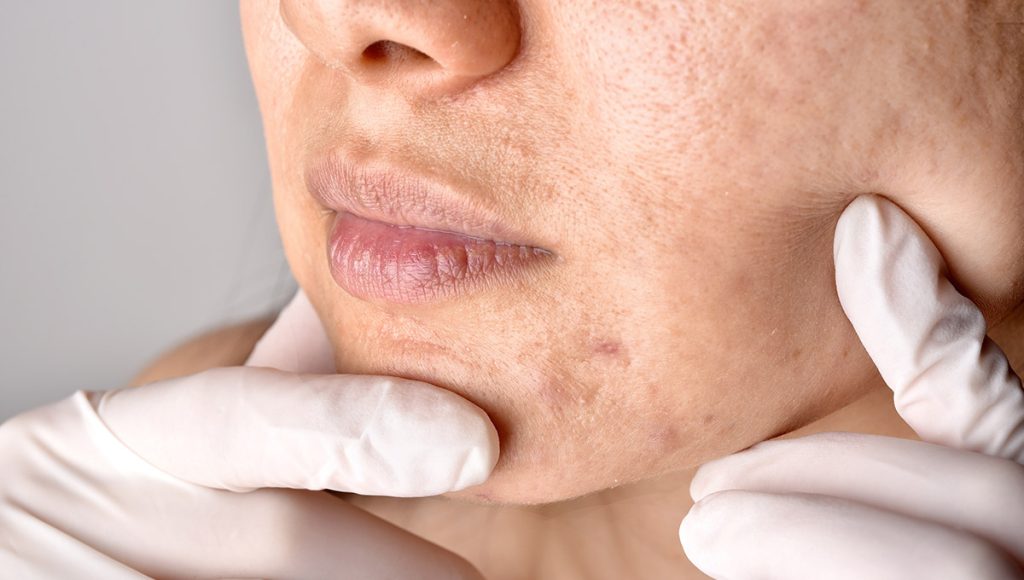
If you’ve ever stood in front of your bathroom mirror thinking, “Do I need a lightening serum or an exfoliating peel?”—you’re not alone.
Hyperpigmentation acne marks vs acne scars might look similar at first glance, but when you take a closer look, they tell different stories.
Knowing which issue you’re tackling sets the pace for how your skin will heal. And hint: the right cleanser is where it often begins.
Physical vs Pigment-Based Differences
Hyperpigmentation doesn’t affect thickness or skin structure—it simply causes discoloration. Acne scars, however, physically alter that smooth texture. Here’s how to pinpoint:
- Touch your skin: Raised or depressed? That’s scarring.
- Look under bright light: If there’s color but no shadowing, it’s likely pigmentation.
- Color clues: Brown or red marks = hyperpigmentation. Deep, sunken areas = scars.
- Response to treatment: If glycolic acid or kojic acid fade it, likely pigmentation.
And let’s be honest—sometimes you’re dealing with both. That’s when layering treatments becomes your power move.
Product Highlight: Nasola Kojic Acid Face Wash
Want to lighten dark marks before they settle in permanently? The Nasola Kojic Acid Face Wash should be your first grab.
- Gently cleanses without stripping moisture.
- Infused with natural kojic acid to reduce dark spots.
- Prepares skin to absorb creams and serums more effectively.
- Suitable for all skin tones and types.
It’s the ideal “kickoff” step that sets the stage for clearer, brighter skin. Just one swap in your daily wash routine? Huge win.
Treatment Plan Tips
Consistency matters more than intensity. Whether it’s pigmentation or scarring, here’s what works:
- Use brightening products with kojic acid daily.
- Exfoliate gently, 2–3 times per week.
- Focus on hydration to support skin turnover.
- Never skip sunscreen—especially when using actives.
Remember: Don’t rush, and don’t pile too many ingredients at once. Build a plan, stick with it, and watch the glow come through.
Post Inflammatory Hyperpigmentation vs Acne Scars – Choosing the Right Solution
Understanding post inflammatory hyperpigmentation vs acne scars is especially important if you have darker skin tones. While PIH can naturally fade over time, ignoring it—or worse, irritating it—can prolong the process by months.
Acne scars, however, won’t improve without more targeted repair methods. And guess what? Both are treatable. When approached strategically.
Understanding Post Inflammatory Hyperpigmentation (PIH)
PIH occurs when inflammation triggers melanocytes to overproduce pigment. Darker skin has more active melanocytes, which is why PIH is more common and more persistent in people with rich skin tones. Here’s what to note:
- Appears flat and discolored (usually brown, red, or purple).
- Fades with time (though slowly).
- Worsens with sun exposure.
- Treatable with consistent use of lightening agents.
The key? Commit to ingredients that pack antioxidant and pigment-inhibiting powers—like kojic acid.
Acne Scars Require Different Approaches
Unlike PIH, scars don’t just disappear on their own. They need stimulation—collagen, exfoliation, and regeneration.
- Focus on ingredients that encourage cell turnover (e.g., glycolic or lactic acid).
- Choose treatments that smooth skin texture.
- Add in niacinamide for moisture barrier support.
- Avoid over-exfoliation that creates new trauma.
Your skin doesn’t need a war—it needs a strategy.
Product Highlight: Nasola Kojic Acid Serum
A real PIH-fighter, the Nasola Kojic Acid Serum delivers hardcore brightness, fast.
- Absorbs quickly—perfect for layering.
- Formulated with natural kojic acid to slow down melanin production.
- Great for all complexions, especially darker tones.
- Visible fading in 4–8 weeks with daily use.
For best results, always pair this serum with sunscreen. It keeps new spots from forming and protects your progress!
Treatment Timeline
Here’s a quick breakdown:
- Post Inflammatory Hyperpigmentation: Noticeable fading in 3–6 months.
- Acne Scars: May require 6+ months of treatment (or dermatologic procedures for deep scars).
- Combo plan: Layer kojic acid serums with exfoliation treatments and hydrate DAILY.
- Reminder: The sooner you treat inflammation, the faster the recovery.
Best Skincare Ingredients for Fading Hyperpigmentation and Acne Scars
One truth? Not all skincare ingredients are created equal—especially when targeting specific issues like pigmentation or scarring.
Knowing which ingredients do what saves you time, skin stress, and disappointment. Whether you’re aiming to brighten or repair, this ingredient cheat sheet is your go-to playbook.
Ingredient Focus: Kojic Acid
Kojic acid is the queen of gentle lighteners—and for good reason. Here’s how it fights hyperpigmentation head-on:
- Derived naturally from fermented rice or mushrooms.
- Inhibits tyrosinase, an enzyme that triggers melanin production.
- Safe for all skin tones, including deeper shades.
- Found in Nasola’s Kojic Acid Cream, Serum, and Face Wash.
Start with small doses, then build up slowly. Glowing skin lies ahead!
Additional Ingredients to Look For
- Vitamin C – Brightens while stimulating collagen.
- Glycolic Acid – Sloughs dead cells, revealing newer, smoother skin.
- Lactic Acid – Encourages cell turnover for improved clarity.
- Salicylic Acid – Clears congestion, lowers risk of new scars forming.
- Niacinamide – Calms redness, strengthens barrier.
Layering these with kojic acid products can result in clearer, cushiony skin over time. But don’t mix them all at once—build a routine that respects your skin.
How Exfoliation Accelerates Healing from Acne Scars and Hyperpigmentation
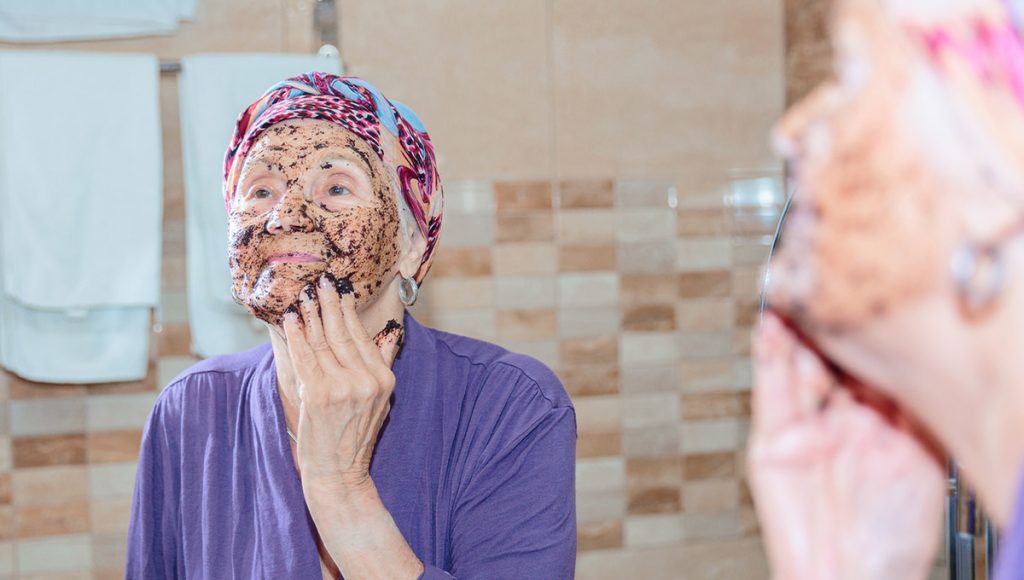
Exfoliation is your steady ride to smoother skin texture and fewer dark spots. But we’re not talking apricot scrubs here—we’re talking chemical exfoliation magic.
Gentle acids, when used correctly, speed up skin’s natural renewal process, allowing acne scars and hyperpigmentation to fade more quickly—and safely.
The Role of Chemical Exfoliation
Chemical exfoliants work by dissolving bonds between dead skin cells, encouraging quicker turnover. This means:
- Smoother surface
- Less visible discoloration
- Improved absorption of serums
- A noticeable glow with time
Alpha-hydroxy acids (AHAs like glycolic/lactic) and beta-hydroxy acids (BHAs like salicylic) are MVPs in this category.
Product Highlight: Nasola Triple Acid Facial Radiance Pads
The all-star trio your skin has been waiting for. The Nasola Triple Acid Facial Radiance Pads combine glycolic, lactic, and salicylic acids for sweep-and-go intensity.
- Convenient pre-soaked pads
- Targets texture, tone, and congestion
- Used 2–3 times a week = great results without irritation
- Perfect for layering with follow-up serums
This product is truly a shortcut to smoother, clearer skin. Just don’t forget sunscreen during the day!
Best Practices for Exfoliation
Want glow without the ouch? Follow these tips:
- Start 2–3 times per week and build up.
- Always moisturize after exfoliation.
- Never mix too many acids at once.
- Use SPF daily—chemical exfoliants make skin more sun-sensitive.
Balance is the beautiful sweet spot your skin wants. Give it time.
Realistic Expectations: Healing Timeframes for Acne Scars vs Hyperpigmentation
So, how fast will you see change? Depends on what you’re treating. Acne scars vs hyperpigmentation move at different paces and respond to different types of treatment.
But with the right plan—and a little consistency—you’ll see visible results.
Here’s what to keep in mind…
How Long Does It Take to See Results?
Healing isn’t a straight line—but we love visual benchmarks, don’t we?
- Hyperpigmentation: 4–8 weeks for notable fading (with consistent use).
- Acne Scars: Varies—milder ones 3–6 months; deeper ones need longer care.
- Both at once: Expect up to 6 months of diligent treatment to see dual improvement.
- Enhance with lifestyle: Stay hydrated, reduce sugar, wear SPF.
Combining Products for Enhanced Results
Using one powerhouse formula is good. Using a routine that layers cleansing, treatment, and exfoliation? Even better.
Here’s a triple-play system using Nasola favorites:
- Cleanse using Nasola Kojic Acid Face Wash.
- Treat with Nasola Kojic Acid Serum.
- Exfoliate weekly with Triple Acid Facial Radiance Pads.
Round it out with regular moisture and SPF…and your reflection? Will thank you every morning.
Additional Insight: Emotional Impact of Skin Clarity
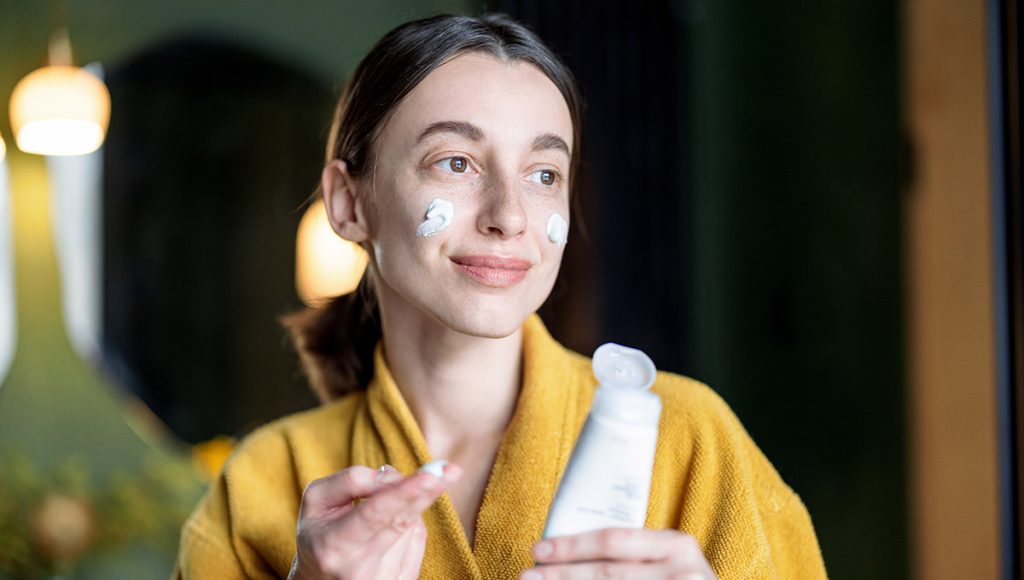
While we often talk about acne scars vs hyperpigmentation on a technical level, let’s not skip the real story—how it makes you feel.
Struggling with skin marks, no matter how small, messes with your confidence. Understanding your skin is step one—but pairing confidence with a real sense of control?
That’s a power move.
Psychological Boost of Skincare Clarity
When you understand what you’re treating, two powerful things happen:
- You stop second-guessing every product.
- You track progress—and celebrate victories.
Clear skin isn’t just about aesthetics. It’s about feeling proud in your skin again.
The Self-Trust You Build Goes Far Beyond the Mirror
Trusting your skincare process bleeds into everything else. More confidence during interviews. More eye contact. Less fear of being “seen.” And that glow? Radiates from inside.
Conclusion
Here’s what matters: Understanding the difference between acne scars vs hyperpigmentation isn’t just science—it’s strategy. By tailoring your skincare routine to the specific concern, you save yourself time, guesswork, and setbacks.
Hyperpigmentation calls for brighteners like kojic acid, while acne scars demand exfoliating and cell-renewal products.
So, what’s the next step? Dive into a routine that works with your skin. Explore our Nasola collection—the Kojic Acid Cream, Serum, Face Wash, and Triple Acid Pads. Build a system that gives your skin a fair shot at healing.
The road to clarity is consistent care—with products that truly show up.
You’re not just treating skin.
You’re nurturing confidence.✨
Frequently Asked Questions
Acne scars usually affect the skin’s texture—think pits or raised bumps. Hyperpigmentation, on the other hand, shows up as flat dark marks, without changes in your skin’s structure. If it feels smooth but looks discolored, that’s likely hyperpigmentation.
Not typically. Hyperpigmentation can fade over time, especially with consistent use of lightening products like Nasola Kojic Acid Serum or Cream. Timeframes vary, but noticeable improvement often appears within 4–8 weeks.
For PIH, focus on lighteners like Nasola Kojic Acid Serum and Face Wash. For acne scars, chemical exfoliants such as Nasola Triple Acid Facial Radiance Pads are more effective.
Kojic acid works well on hyperpigmentation by targeting melanin production. It doesn’t restructure skin affected by deep scarring but can enhance brightness and evenness. For scars, combine it with exfoliating agents for better, balanced results.
Absolutely. Chemical exfoliation, especially with glycolic and salicylic acids, helps resurface the skin. Products like Nasola Triple Acid Pads encourage faster cell turnover, making scars appear less noticeable over time.

